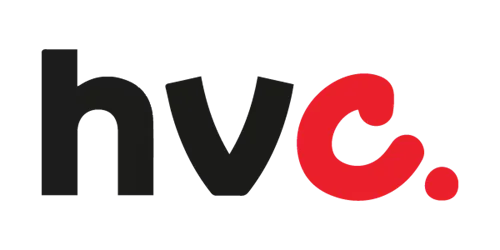Best 6 PV & energy curtailment software tools (2025)
If you work in the photovoltaics (PV) renewable energy sector and want to avoid suboptimal returns, you’ll need to effectively control asset production. One way to do this is aligning asset production with market dynamics. Another is load management and production curtailment, for which you can use several smart software solutions. Below, we’ll introduce you to 6 of the best PV & energy curtailment software tools available right now.

If you work in the photovoltaics (PV) renewable energy sector, you know the energy spot market is becoming more and more volatile. Which also means it’s challenging to maximize revenue for your solar farm or renewable energy installation. These installations produce energy, regardless of spot market prices, after all.
But there’s a relatively simple fix. If you want to avoid suboptimal returns, you’ll need to effectively control asset production. One way to do this is aligning asset production with market dynamics. Another is load management and production curtailment, for which you can use several smart software solutions.
However, it’s not like curtailment is a widely adopted strategy to avoid negative returns. As a matter of fact, globally, average curtailment rates for wind and solar are quite low, often around 3%. Partly, this is due to business in PV and renewables not having access to the right software architecture. We’re here to help solve this.
Below, we’ll introduce you to 6 of the best PV & energy curtailment software tools available right now.
How to use software for load and production curtailment
Load and production curtailment involves the deliberate reduction of electrical power consumption or production to manage energy demand and supply balance.
Using software for load management and production curtailment lets you make smarter energy use decisions. In industrial settings, curtailment software can tweak production schedules or slow down processes to avoid grid feed in during unfavorable conditions, like negative energy prices on the spot market.
For renewable energy, this type of software can balance the load by storing excess energy, which is only possible with a battery energy store system (BESS). Most sites don’t have these, however. The other option is cutting back production when necessary.
But none of these processes are very efficient if you don’t have access to the right type of data. Which can be quite a challenge when you’re dealing with a variety of assets, equipped with hardware from a variety of vendors, and with a variety of protocols to consider.
In the world of PV renewable energy, access to the right type of data is the number one blocker to efficiency and avoiding negative returns.
But on top of the complexity of your varied assets, there’s also a variety of software tools out there.
What to look out for in PV & energy curtailment software
When choosing PV load and curtailment software for your renewable energy business, there are several factors to take into consideration.
First of all, look for comprehensive features like real-time monitoring and forecasting. Ensure it integrates well with your current systems and that it’s scalable over time – we suggest picking a tool that’s based on edge computing. An intuitive user interface for easy data interpretation is also quite a nice addition.
Reliable customer support is crucial for troubleshooting, so check your software vendor for support capabilities. You’re also working with sensitive data, so robust security features and certifications aren’t more than a nice-to-have.
And since you’re probably dealing with quite a specific combination of industrial assets, being able to customize the software so it meets your specific needs is a must.
Let’s put that in perspective. These are the things you need to look out for in your PV & energy curtailment software:
- Comprehensive featureset (e.g. real-time monitoring)
- Integration with your current systems
- Scalability
- Based on edge computing
- Intuitive UI
- Proper customer support
- Robust security features
- Flexibility and customization
The best 6 PV & energy curtailment software tools of 2025
Here are 6 of the best PV & energy curtailment software tools available to industrial renewable energy businesses, right now.
1. Helin

Helin – that’s us, by the way – is an industrial edge intelligence platform built specifically for the renewable energy, maritime and offshore sectors. It uses edge computing to meet your demands for high-performance scalable monitoring of industrial assets.
Helin even combines local AI with a centrally managed data infrastructure for even better accuracy.
But apart from allowing you to collect data on remote industrial processes like those happening in solar or wind farms, Helin does more. A lot more. Our API-based curtailment module was developed specifically to help solve the PV & energy curtailment issue many businesses in renewable energy face.
The main issue these businesses face is the complexity of their assets. All these different types of hardware and protocols are difficult to unify. Helin’s edge data management system fixes that. But the curtailment software they’ve added on top is the real kicker.
This curtailment API enables curtailment in your inverters and changing battery setpoints. The real-time interface also enables grid operators to intervene in cases of acute grid congestion. If you’d like to know more about the specifics, make sure to contact us.
Website: https://www.helindata.com/
Location: Rijswijk, the Netherlands
Key features:
- Prevent negative returns during negative electricity prices
- API for integrating 3rd party (EMS) system
- Open infrastructure to deploy any (3rd party) application
- High-fidelity telemetry data
- Edge computing infrastructure
- Real-time interface (mandatory for installations with >1MW capacity)
- Load management & load balancing
2. Envitron

Another Dutch PV & energy company, Envitron, also offers a specific production curtailment service. The website’s in Dutch only, so here’s a summary of how their curtailment system works.
First of all, this system is great for energy production installations that could get fined when production isn’t curtailed. But it’s also a great solution for large-scale producers that trade energy on the spot market.
Basically, Envitron connects a curtailment controller to one or more of your inverters. Through a secure API, Envitron can send curtailment signals to the inverters. These signals are also capable of making sure a specific output is reinstated after a set amount of time.
Website: https://www.envitron.com
Location: Haren, the Netherlands
Key features:
- Curtailment controllers
- Secure API
- Real-time insight into data
3. Withthegrid

Withthegrid is an asset monitoring platform on a mission to create technology that “connects and empowers” (no pun intended) “all energy industry stakeholders”. They built a proprietary product they call the Teleport Gateway. The ‘Teleport’ itself is a piece of hardware you connect to your energy assets.
Once you’ve installed your ‘Teleports’, you can connect your grid system to your IT systems and use it for a bunch of use cases. One of these use cases is you can enable automatic curtailment of solar panels and wind turbines by your energy trader.
Website: https://withthegrid.com/
Location: Utrecht, the Netherlands
Key features:
- IoT connectivity
- Local EMS
- Real-time interface
4. Meteocontrol

Meteocontrol offers asset management specifically for PV systems. You’ll first need to install their data loggers to get started. These gather all the data for monitoring your solar energy installations. They’re an essential part for grid integration and make it easier to control your PV systems.
These data loggers, in turn, transfer all the relevant data from your PV system to their software environment, which meteocontrol calls VCOM (short for Virtual Control Room). This gives you a great overview of performance of your PV assets.
But for curtailment, specifically, you’ll need to make sure you’ve installed the proprietary blue'Log XC data logger. This logger has extensive functions for active and reactive power management. Essentially, when the generation and consumption balance reaches a stage where the PV system could exceed the permitted export capacity, this data logger reduces the PV inverters' power and limits their active output.
Website: https://www.meteocontrol.com/en/
Location: Augsburg, Germany
Key features:
- Graphical user interface for configuration
- Precise active and reactive power control
- Integrated solutions for mixed parks
- Log (Archiving curtailment actions)
5. Gantner Instruments

Gantner Instruments offers a full-service PV monitoring and control system for PV power plants that operate at utility scale. This system combines a slew of hardware devices like monitoring devices, power quality meters, data loggers and more with a cloud-based SaaS solution.
This facilitates real-time data processing and on-the-fly parameter calculations. All this data leads to a variety of insights for you to act upon. For example, you’ll be able use the resulting insights for grid curtailment studies, validation of your tracking strategies and much more.
Website: https://www.gantner-instruments.com/
Location: Schruns, Austria
Key features:
- Pre-configured measurement settings for various PV technologies
- Browser based HMI/SCADA
- Real-time performance prediction
- ±2.5% accuracy (nRMSE) on large-scale plants
6. OEM vendor software (e.g. SMA & Sungrow)

Apart from the specific above-mentioned PV & energy curtailment software solutions, you can also opt for solutions by original equipment manufacturers (OEM) like SMA and Sungrow. These companies produce parts and equipment that may be marketed by other companies.
Let’s take Sungrow as an example. In a nutshell, Sungrow creates solar inverters for PV systems (and much more). But their hardware products also come with a comprehensive lifecycle management app called iSolarCloud. This allows for extensive data collection, plant monitoring and operation & maintenance (O&M).
Combine all this together, and you have a decent solution that facilitates PV & energy curtailment. Especially when using Sungrow’s DC-coupling solar-plus-storage.
Similarly, SMA’s Power Limiter allows you to set up custom curtailment times and comes with pre-configured curtailment levels. SMA also developed a range of software products that can help you with PV & energy curtailment.
These OEM vendor software tools are definitely something to consider, especially when you’re already using the hardware these businesses offer. But they also limit the possibilities for generic asset control across your entire portfolio, since you’ll probably have a multitude of vendors across your sites.
Why Helin’s PV & energy curtailment software is your best option right now
Of course, when you’re considering PV & energy curtailment software, any of the above options are viable. Which option is best for you also depends on the exact PV setup you’re working with.
But when you’re dealing with an industrial-size solar or wind farm and work with PV & energy data at scale, Helin’s probably your best bet. For one, Helin operates based on edge computing, allowing for unrivalled scalability.
More importantly, our curtailment API was developed specifically for PV & energy curtailment. As such, you probably won’t find any better point-based solutions out there, right now.
On top of this, we remove all complexity by standardizing and unifying all data streams from your assets, and offer you a single interface for generic control.
Want to read more?
Stay up to date with the latest trends and developments on the topic of industrial edge computing, monitoring and intelligence.
Get real-time insights
into your remote assets
Combine local artificial intelligence with a centrally managed data infrastructure for more accuracy, reduced congestion on your network and lower costs.






.webp)






